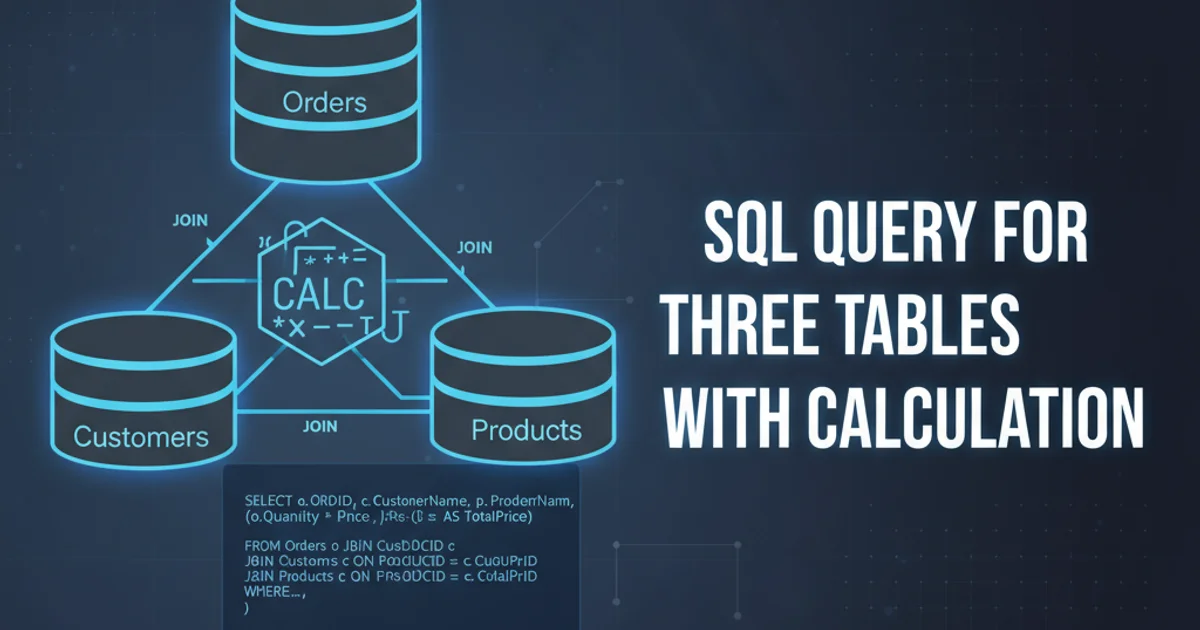Nested JSON objects - do I have to use arrays for everything?
Categories:
Nested JSON Objects: Beyond Simple Arrays

Explore how to structure complex data in JSON without relying solely on arrays, focusing on objects for meaningful relationships and efficient parsing.
When working with JSON (JavaScript Object Notation), a common question arises: do I have to use arrays for everything, especially when nesting data? The short answer is no. While arrays are excellent for ordered lists of similar items, JSON objects provide a powerful way to represent structured, key-value paired data, allowing for more semantic and easily accessible nested structures. This article will guide you through effectively using nested JSON objects, demonstrating their advantages over array-centric approaches for complex data.
Understanding JSON Objects vs. Arrays
Before diving into nesting, it's crucial to differentiate between JSON objects and arrays. An array is an ordered collection of values, indexed numerically (e.g., [value1, value2, value3]). It's ideal for lists where the order matters or where items are homogeneous. A JSON object, on the other hand, is an unordered collection of key/value pairs (e.g., {"key1": "value1", "key2": "value2"}). Keys must be strings, and values can be any valid JSON data type (string, number, boolean, null, object, or array). Objects are perfect for representing entities with distinct properties.
flowchart TD
A[JSON Data Structure] --> B{Collection Type?}
B -->|Ordered List of Items| C[Use Array `[]`]
B -->|Key-Value Pairs for Entity Properties| D[Use Object `{}`]
C --> E[Example: `["apple", "banana"]`]
D --> F[Example: `{"name": "Alice", "age": 30}`]
E --> G[Access by Index: `data[0]`]
F --> H[Access by Key: `data.name`]Decision flow for choosing between JSON arrays and objects
The Power of Nested Objects for Semantic Data
Nesting objects within objects allows you to build rich, hierarchical data structures that accurately reflect real-world relationships. Instead of relying on an array of generic items, you can define specific properties for each nested level. This approach makes your JSON more readable, self-documenting, and easier to parse programmatically, as you can directly access properties by their meaningful keys rather than iterating through arrays and checking conditions.
{
"user": {
"id": "usr_123",
"profile": {
"firstName": "John",
"lastName": "Doe",
"email": "john.doe@example.com"
},
"address": {
"street": "123 Main St",
"city": "Anytown",
"zipCode": "12345"
},
"preferences": {
"newsletter": true,
"theme": "dark"
}
}
}
Example of a well-structured nested JSON object representing a user
In the example above, accessing the user's email is straightforward: user.profile.email. If this data were flattened or heavily reliant on arrays, you might have to iterate through an array of properties to find the 'email' field, which is less efficient and more error-prone.
Combining Objects and Arrays for Complex Collections
While objects are great for individual entities, arrays become essential when you have a collection of similar entities. The best practice often involves nesting objects within arrays, or arrays within objects, depending on the relationship. For instance, a list of users would be an array of user objects, and a single user object might contain an array of their orders.
{
"products": [
{
"id": "prod_001",
"name": "Laptop Pro",
"price": 1200.00,
"specifications": {
"cpu": "Intel i7",
"ram": "16GB",
"storage": "512GB SSD"
},
"tags": ["electronics", "computer", "high-performance"]
},
{
"id": "prod_002",
"name": "Wireless Mouse",
"price": 25.00,
"specifications": {
"color": "black",
"connectivity": "Bluetooth"
},
"tags": ["accessories", "peripherals"]
}
],
"category": "Electronics"
}
JSON demonstrating an array of product objects, each with nested objects and arrays
In this products example, we have an array of product objects. Each product object contains nested objects for specifications and an array for tags. This hybrid approach leverages the strengths of both data structures, providing a flexible and robust way to model complex data.
Parsing Nested JSON in JavaScript/jQuery
Parsing nested JSON in JavaScript or with jQuery is straightforward due to JavaScript's native object and array handling. Once a JSON string is parsed into a JavaScript object, you can access nested properties using dot notation or bracket notation.
JavaScript (Native)
const jsonData = { "user": { "profile": { "email": "john.doe@example.com" } } };
const userObject = JSON.parse(jsonData);
console.log(userObject.user.profile.email); // Output: john.doe@example.com console.log(userObject['user']['profile']['email']); // Alternative bracket notation
jQuery ($.parseJSON)
const jsonData = { "user": { "profile": { "email": "john.doe@example.com" } } };
// $.parseJSON is deprecated in jQuery 3.0+, use JSON.parse instead // For older jQuery versions: const userObject = $.parseJSON(jsonData);
console.log(userObject.user.profile.email); // Output: john.doe@example.com
Modern JavaScript environments and jQuery versions typically recommend using the native JSON.parse() method for parsing JSON strings, as it's generally more performant and standardized.
SyntaxError. Tools like JSON validators can help identify issues.